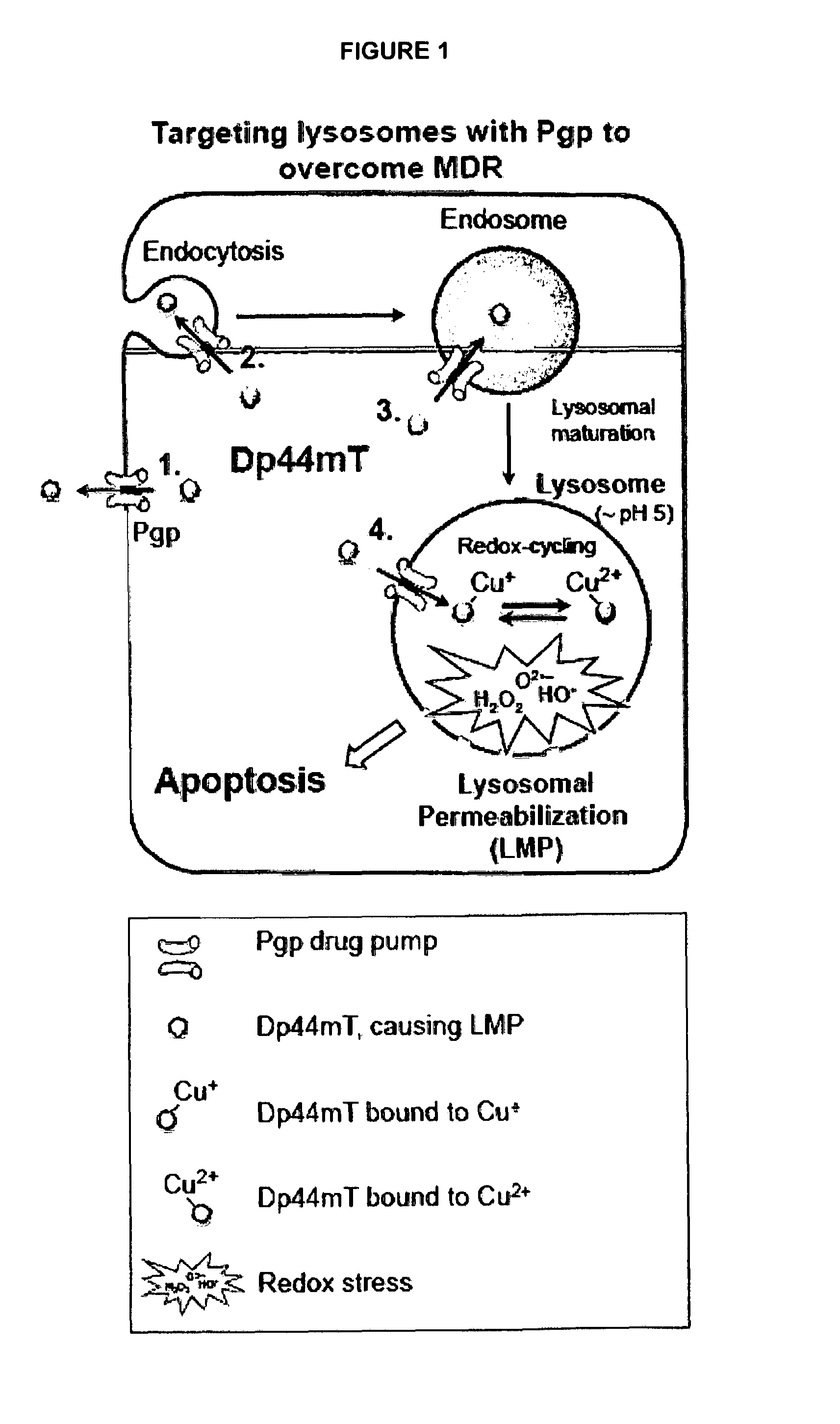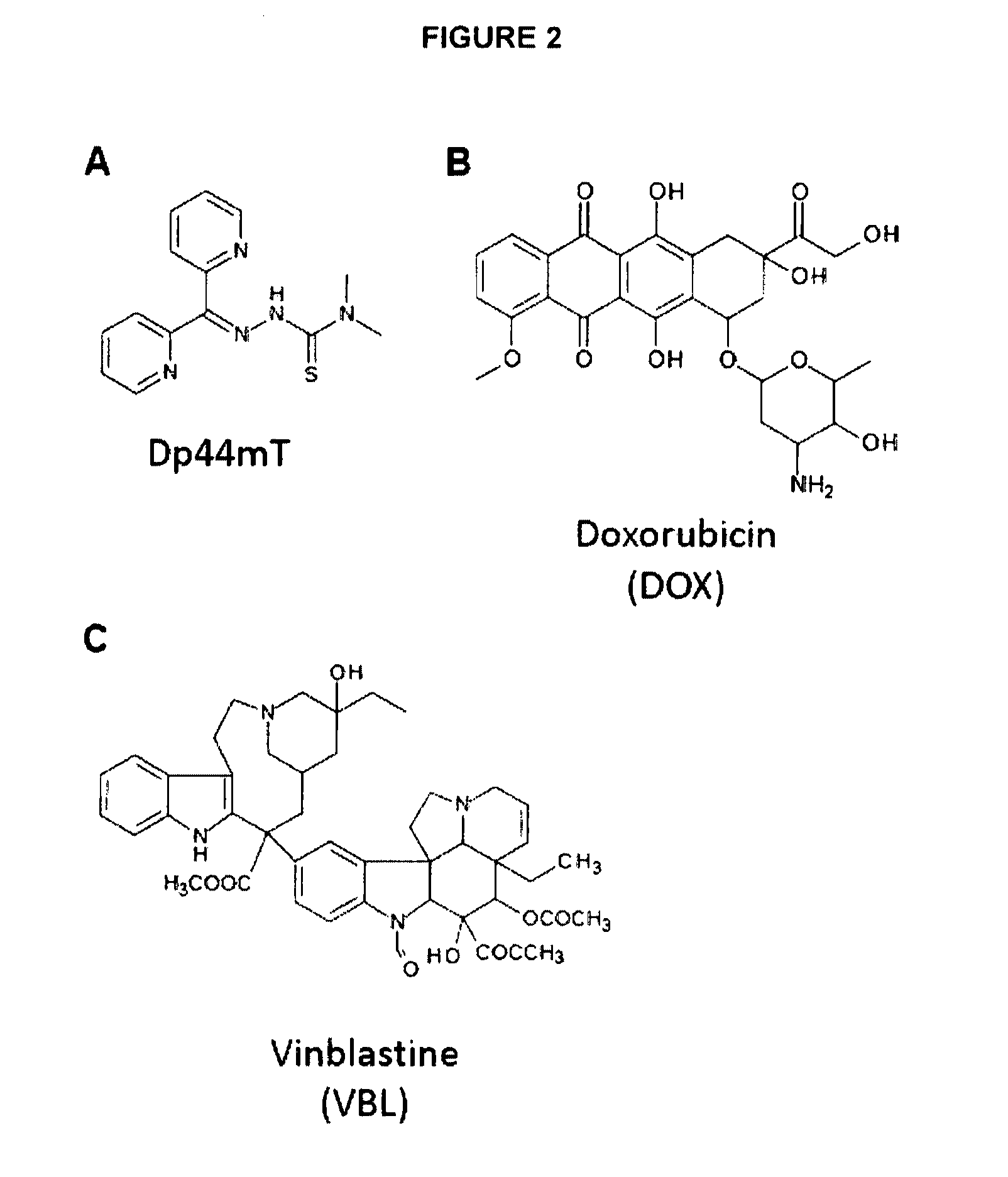Chemotherapy for Drug-Resistant Cancer Cells
- Summary
- Abstract
- Description
- Claims
- Application Information
AI Technical Summary
Benefits of technology
Problems solved by technology
Method used
Image
Examples
example 1
A) Thiosemicarbazones Dp44mT and Bp4eT Exhibit Increased Cytotoxicity to Cells in the Presence of Functional Pgp
[0141]We have previously reported that the thiosemicarbazone, Dp44mT, exhibits increased cytotoxicity to Pgp over-expressing KBV1 cells relative to KB31 cells that do not express Pgp.5 However, whether this was related to the expression of Pgp was not established. To determine that the potentiated cytotoxicity of Dp44mT20 is in fact Pgp-dependent, two pairs of well characterized Pgp-expressing and their non-Pgp expressing counterpart cells (KB31 cells vs. KBV16,7 and 20088 vs. 2008 / P200A) were used in this study (FIG. 3A-E). In addition, another related thiosemicarbazone, Bp4eT,9 was assessed to see if potentiated cytotoxic activity was also observed.
[0142]In initial studies, the expression of Pgp was examined by western blot in both pairs of cell lines and shown to be marked in KBV1 and 2008 / P200 cells, while being undetectable in KB31 and 2008 cells (FIG. 3A, C). As an i...
example 2
[0158]MDR is a major obstacle for successful treatment outcomes in cancer. The inventors and others have previously demonstrated that certain drugs can possess potentiated cytotoxicity in MDR cells relative to drug-sensitive cells. However, the molecular mechanism of how these agents precisely overcome MDR is still unknown. The inventors have shown that one of these drugs, namely Dp44mT, accumulates within lysosomes to compromise lysosomal membrane integrity and induce cell death. Moreover, it has also been demonstrated that MDR is conferred by Pgp localized not only on the plasma membrane, but also by Pgp within the lysosomal membrane which results in the sequestration of a Pgp substrate i.e., DOX into lysosomes.21 Considering this, the current study examined: (1) if the increased cytotoxicity of Dp44mT in MDR cells was Pgp-dependent; (2) whether Dp44mT was a Pgp substrate or an inhibitor, and (3) if there was a link between the potentiated cytotoxicity of Dp44mT in Pgp-expressing ...
PUM
| Property | Measurement | Unit |
|---|---|---|
| concentrations | aaaaa | aaaaa |
| pH | aaaaa | aaaaa |
| drug resistance | aaaaa | aaaaa |
Abstract
Description
Claims
Application Information
 Login to View More
Login to View More - R&D
- Intellectual Property
- Life Sciences
- Materials
- Tech Scout
- Unparalleled Data Quality
- Higher Quality Content
- 60% Fewer Hallucinations
Browse by: Latest US Patents, China's latest patents, Technical Efficacy Thesaurus, Application Domain, Technology Topic, Popular Technical Reports.
© 2025 PatSnap. All rights reserved.Legal|Privacy policy|Modern Slavery Act Transparency Statement|Sitemap|About US| Contact US: help@patsnap.com



